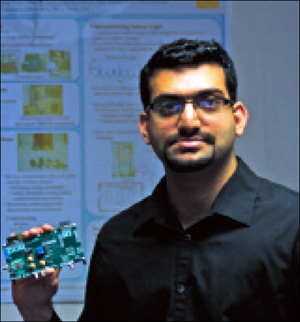Oct 27, 2014The average age of the 607,380 bridges in the United States is 42 years, according to a recent report conducted by the Obama Administration. One in nine bridges, or nearly 68,000, is rated as structurally deficient. Researchers at Tufts University in Massachusetts (a state where half of all bridges are deficient) are working on a way to use flying robots and RFID sensors to monitor the condition of aging spans.
Babak Moaveni, an associate professor of civil and environmental engineering at Tufts, attached wired sensors to beams and joints on a bridge on the Tufts campus to continuously monitor vibrations. Significant changes in vibration levels can indicate damage.

But it is impractical to run data and power cables for sensors across 600,000 bridges, so Moaveni teamed up with Usman Khan, a Tufts assistant professor of electrical and computer engineering, who has been working on algorithms that enable robots to collaborate and navigate an environment. Khan developed a platform for controlling and synchronizing unmanned aerial vehicles (UAVs).
The researchers envisioned a system for reading data from wireless sensors installed on bridges. Khan has demonstrated that a quadcopter can navigate from one location to the next based on reading a two-dimensional QR code. He has also shown that a quadcopter can host an RFID reader and identify a tag within a distance of 4 inches (watch the video).
The computer on the quadcopter is a simple microcontroller and cannot do a lot of computations. To overcome this limitation, Khan and Moaveni developed algorithms that allow the sensors to remove the spatial and temporal redundancy in their data. The next step is to have the quadcopter capture data from the sensors and perform another action, such as taking a picture, based on the data collected.
"We have done a proof of concept in the lab showing that RFID data can be captured," Khan says. "We have a vision and all of the pieces. The next step is to deploy the solution on a real bridge." The researchers hope to get funding to purchase wireless sensors to continue their work. Commuters who cross the nation's bridges twice a day will benefit if they do.
